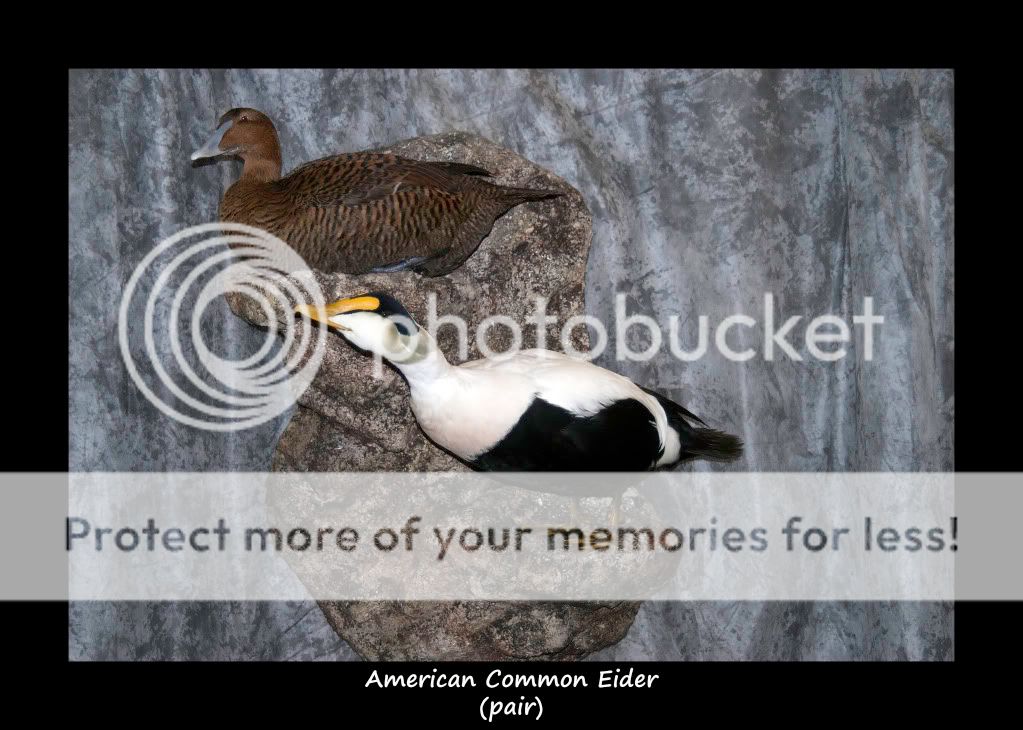Steve Sanford
Well-known member
A good friend and I just spent two sublime days on the coast of Maine in quest of Eiders and other Sea Ducks. I was driven by a lifelong curiosity – having read about hunting Eiders among the rocky islands of Maine's rugged coast in Connett and Barber and a host of other classic waterfowling books. The Common Eider was the only Atlantic Flyway species I had yet to shoot – but this was not about killing an Eider for any checklist. Rather, I wanted the experience that could only come from being in the right setting, in the right weather – and with the right partners. Mark Wesner and I have gunned together since we met here in eastern New York's dairy country about 15 years ago - he a transplant from the Keystone State, I from the south shore of Long Island. We've spent many fine adventures afield together – this was to be a special one. And, thanks to duckboats.net, I found the right expert to make it happen. Neither Mark nor I had ever hired a guide before. With Capt. Troy Fields of Traditions Guide Service ( http://www.traditionsguideservice.com/ ) in southern Maine, we could not have done any better.
We drove across Vermont and New Hampshire in light snow on Thursday afternoon. After stopping to visit an old friend on the way, we got to our motel after dark. It was still dark when we launched the next morning.
The first sign of good things was – literally – a sign. Unlike the restrictions and prohibitions and exclusion I find increasingly at Long Island launch sites, this one was truly welcoming. I especially liked the hours that accommodate those who use the water other than from "sunrise to sunset" – the hours I typically see on LI.

Troy launches over the beach – hard-packed but still 4WD habitat. We enjoyed the next two mornings in the comfortable and seaworthy Bailey Bridge Boat that Troy has modified for hunting sea ducks. BBBs are military craft designed to be locked transom-to-transom with another and then – along with dozens of other pairs – support a plank "road" to allow vehicles to cross rivers and such on a floating bridge. He has posted his build previously here at duckboats.
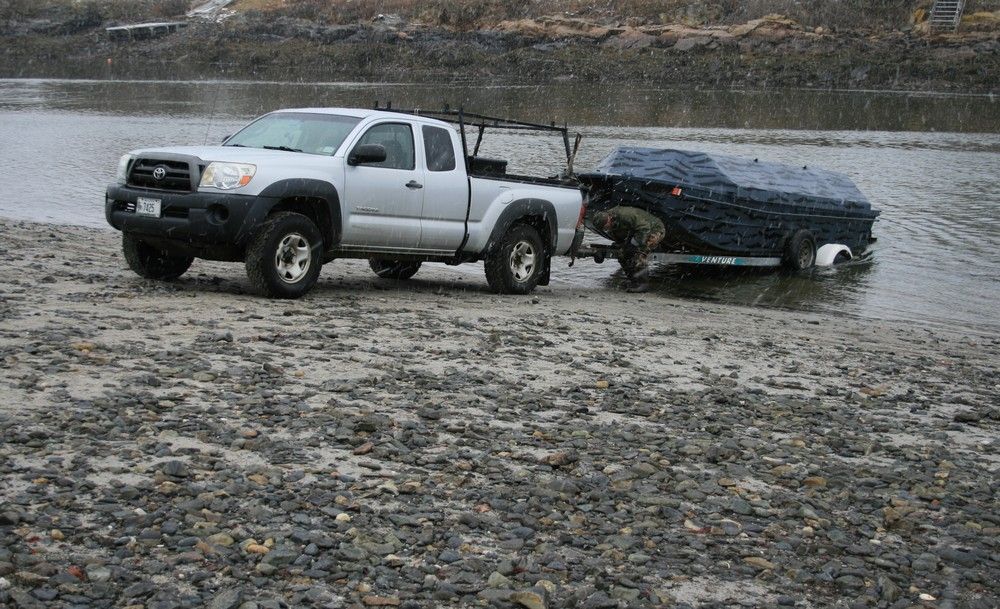
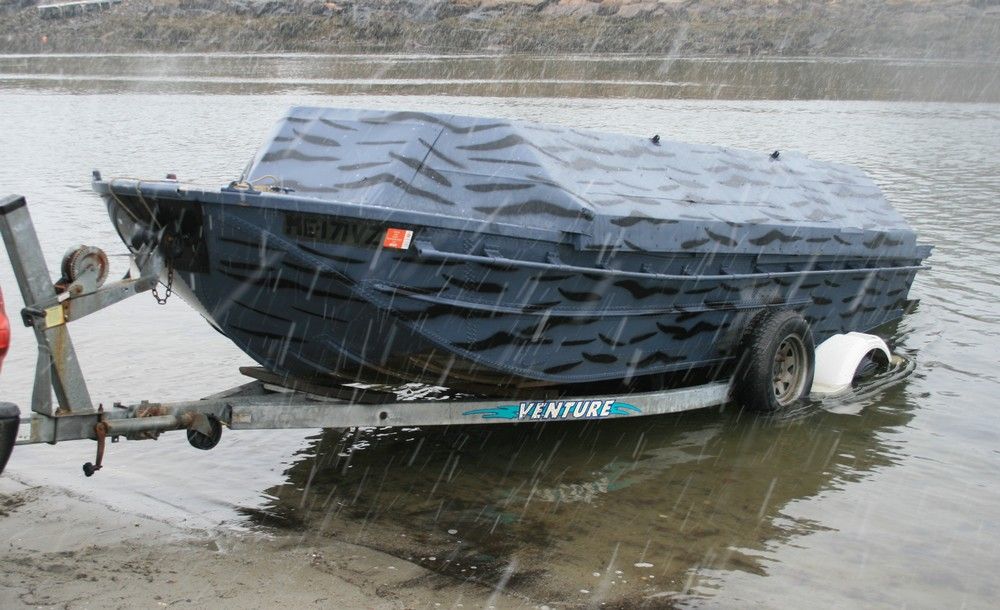
A licensed Captain and a Master Guide, Troy was competent, organized, hard-working - and wonderful company.
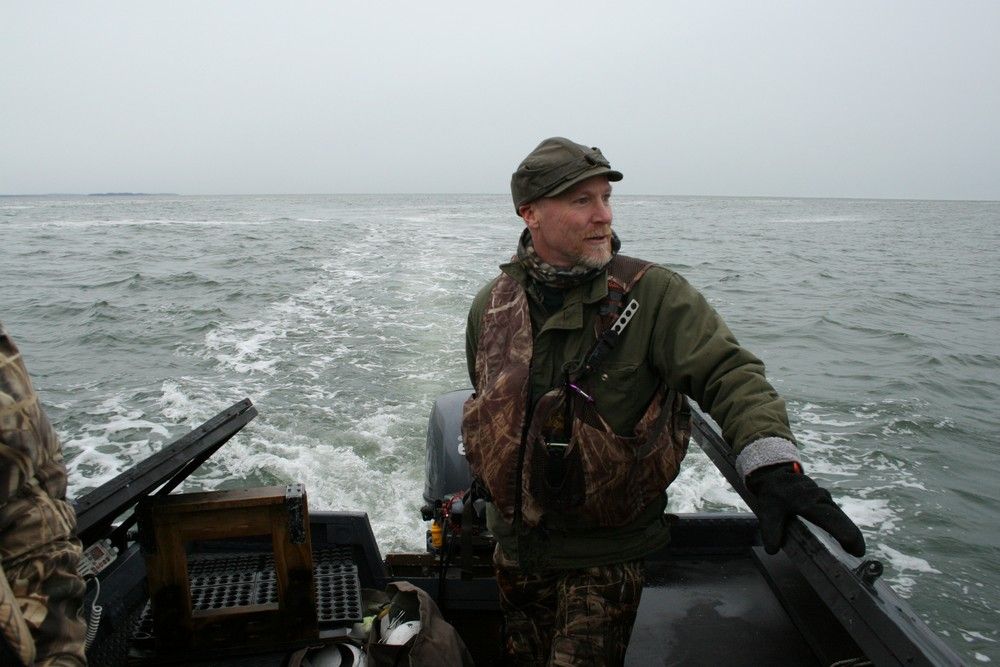
The swells from a 5-day nor'easter put us in the lee of a wild, rocky island. An old lighthouse and keepers cottage – straight out of an Edward Hopper painting – kept us company.
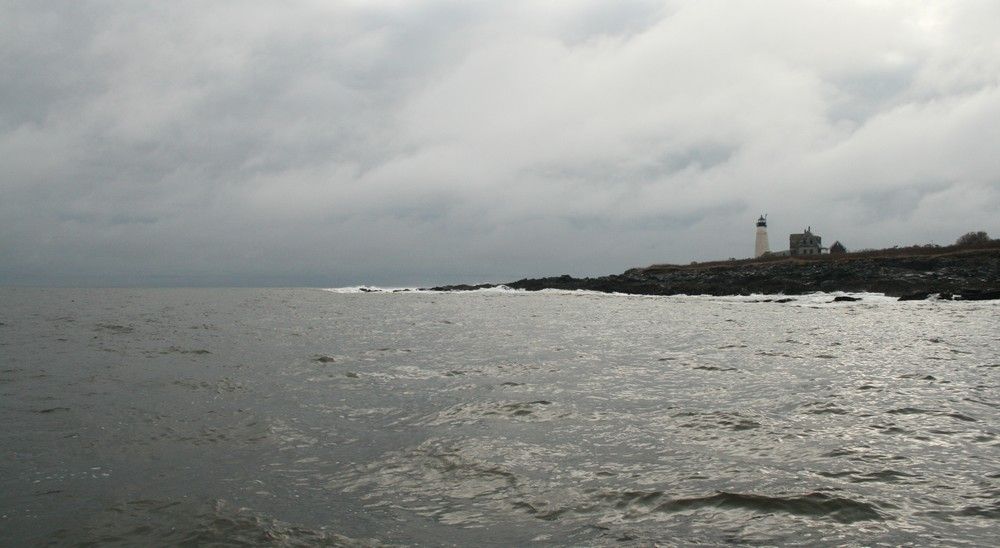
It was also easy to understand why Winslow Homer - we were just miles from his Prout's Neck studio - could not help but paint this dramatic coastline.
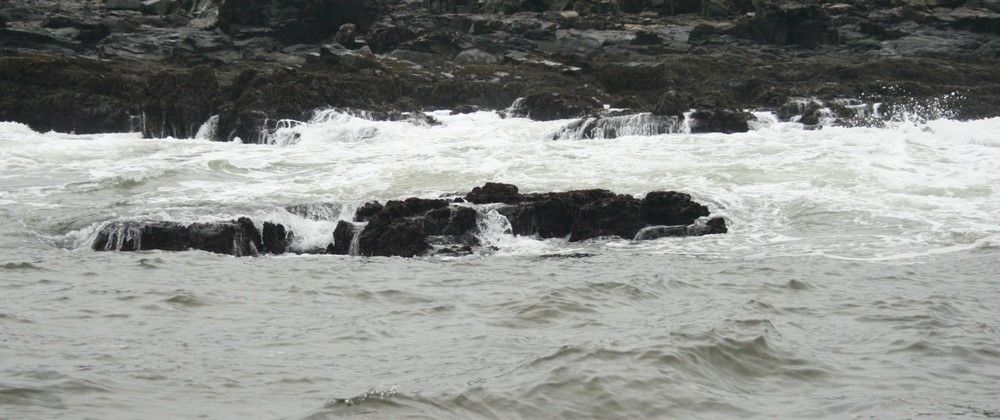
We hunted over a rig of burlapped Eider and Scoter stool – all on long-lines. We were in 6 or 7 fathoms of water on Day 1 and 4 or 5 fathoms on Day 2. The rig worked well and we enjoyed plenty of opportunity. The flight and especially the flock movements of divers are just mesmerizing and we took plenty of moments just to watch them fly the rig. We took our time and picked our shots. On my first "attempt" – as about 15 or 20 Black Scoters peeled over the rig – I was distracted by two Purple Sandpipers right in the middle of the flock and never pulled the trigger. We see very few Purples on Long Island – because they like rocks, which are a rarity on Great South Bay. Maine has plenty of rocks – and many more Purple Sandpipers than I have seen before.
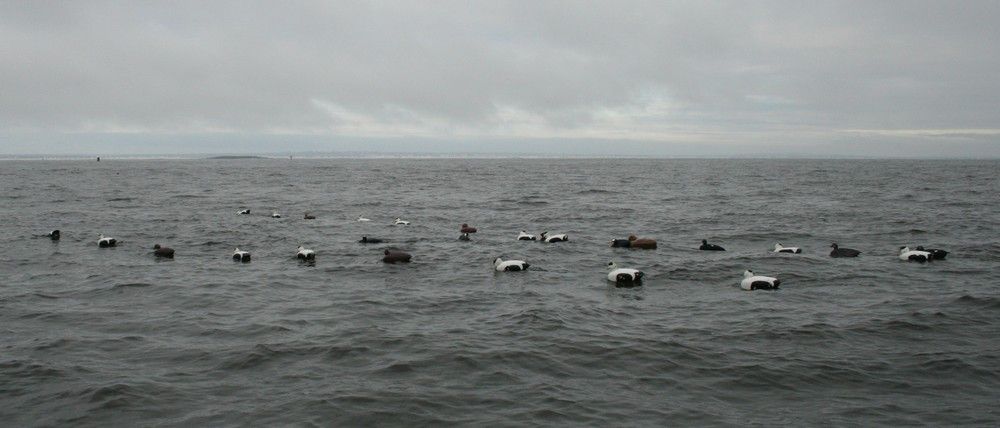
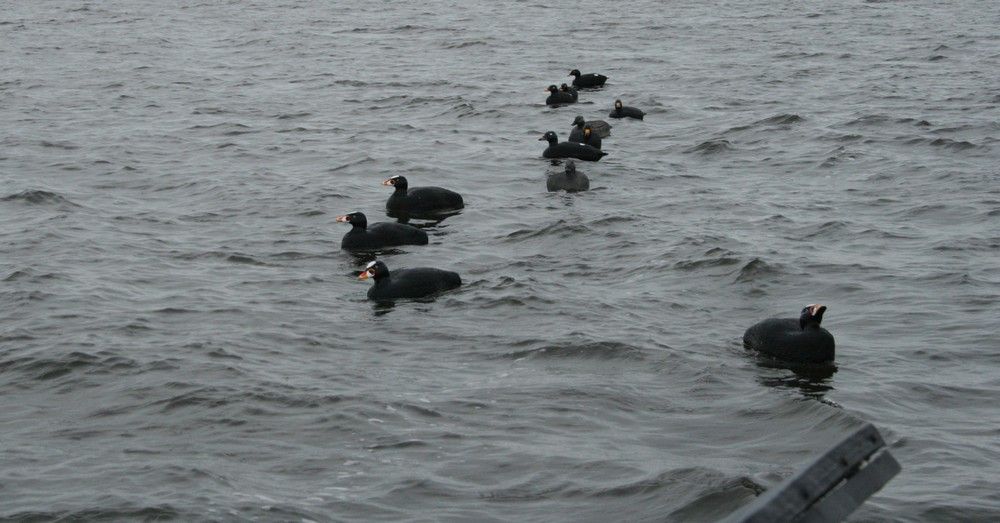
A new "life bird" for me was a Black Guillemot. We had 3 different ones fly by and I got a good look at the second one. They are the size of and fly like a Butterball but show even more white in the wings. Here is how Audubon painted them (we , of course, saw only the winter plumage):
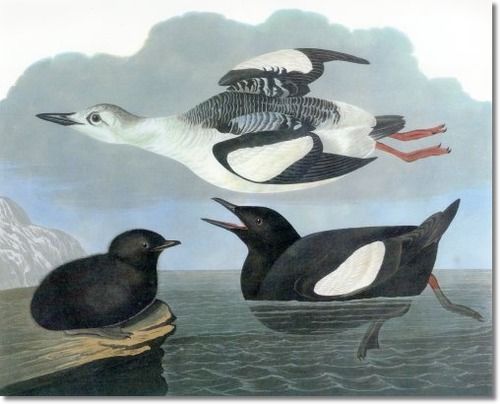
Other "big water" birds we saw were Horned and Red-necked Grebes, Common and Red-throated Loons and Great Cormorants. We saw dozens of Oldsquaw but they typically stayed wide. We had a few hens buzz the rig but we did not salute any of them. We also saw a Rough-legged Hawk – down from the tundra for the winter – hovering over the island. And, we had a Harbor Seal swim up within about 30 yards of our stern – but it "sank" before I could snap the shutter. Later, we saw dozens hauled out on some rocks further in.
Troy worked very hard throughout the whole hunt –
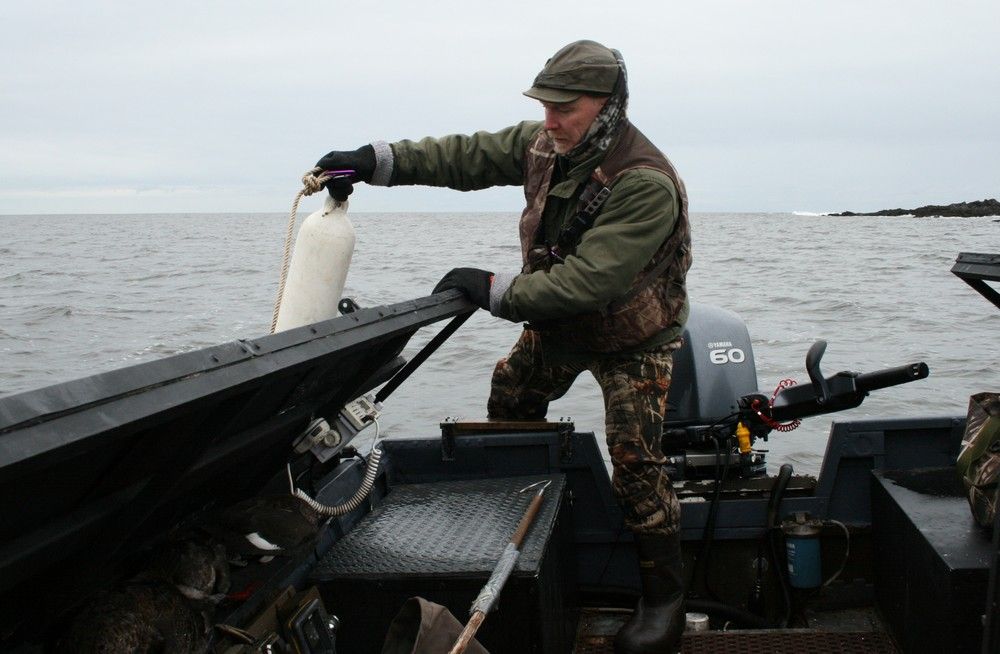
but maybe Black Pearl worked even harder. Here she retrieves the first Black Scoter I have shot in about 30 years.
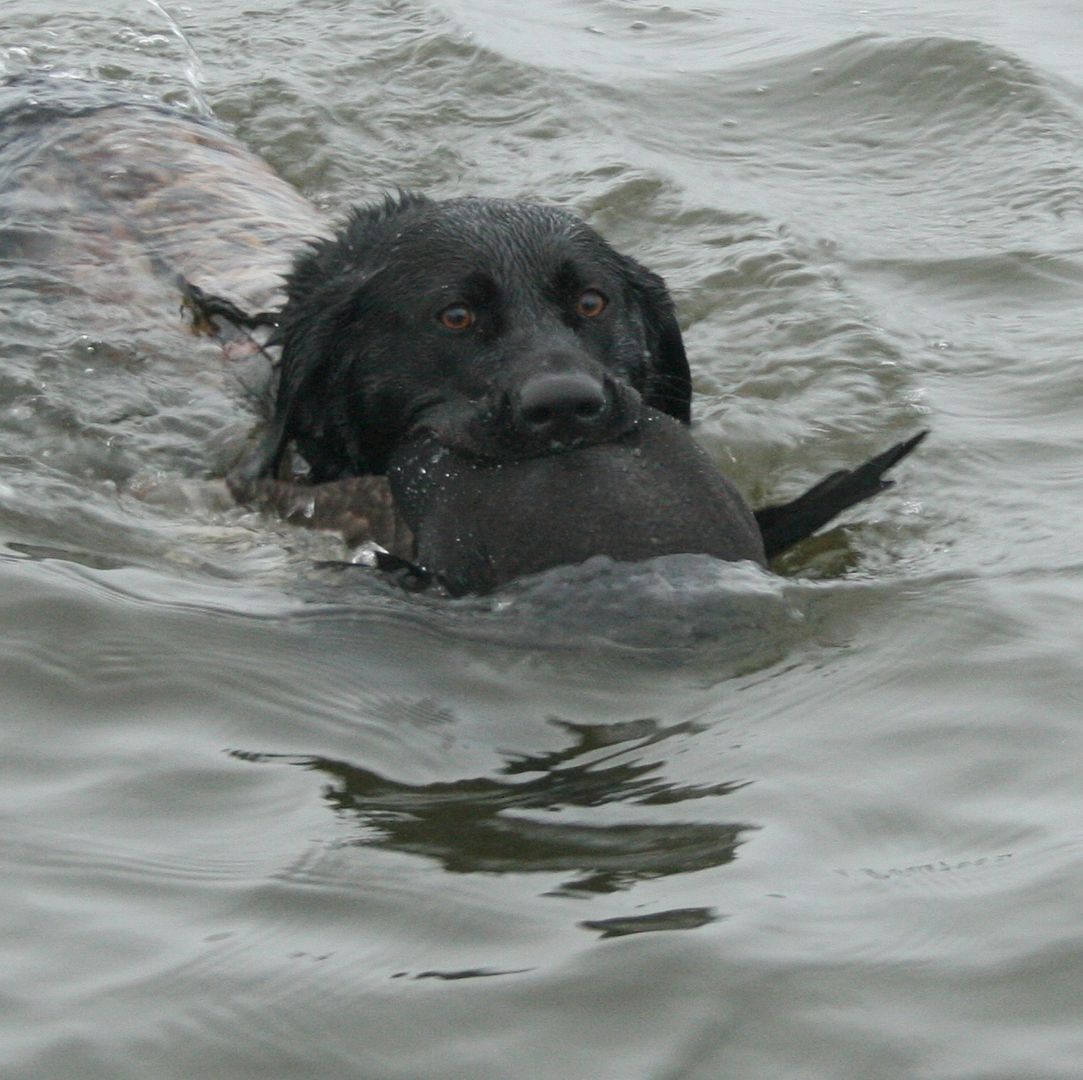
I remember seeing my first one when I was about 4. My Dad would always bring his birds to the entryway right off our kitchen and I would inspect them. I had forgotten how luminous was the knob on a Pumpkinbill Coot....
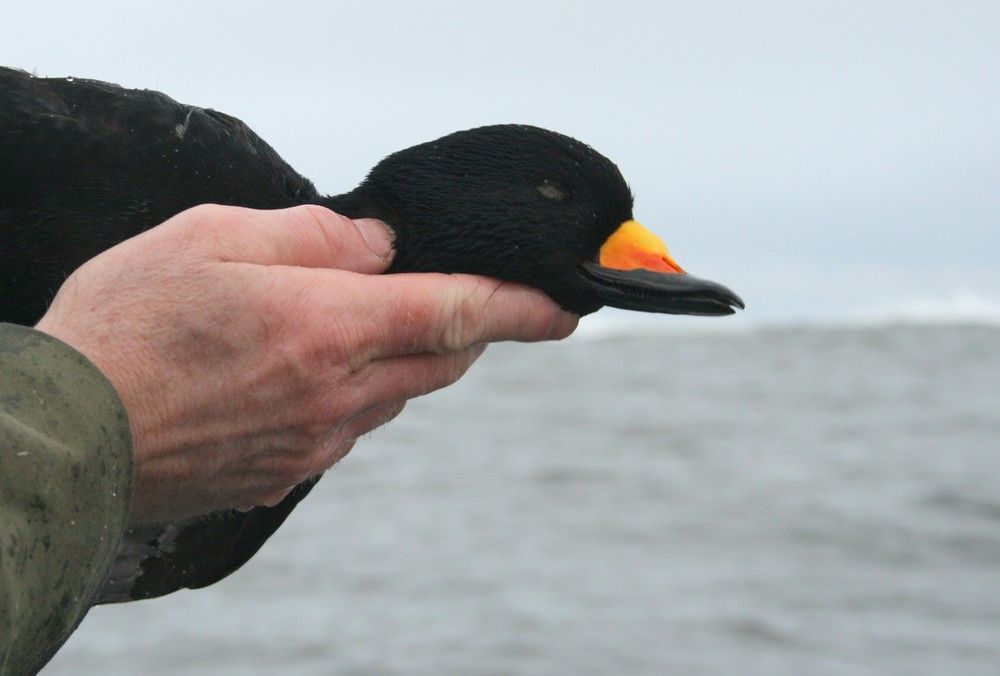
Inspecting the birds in the hand in another one of those lifelong "behaviors" which have never failed me.
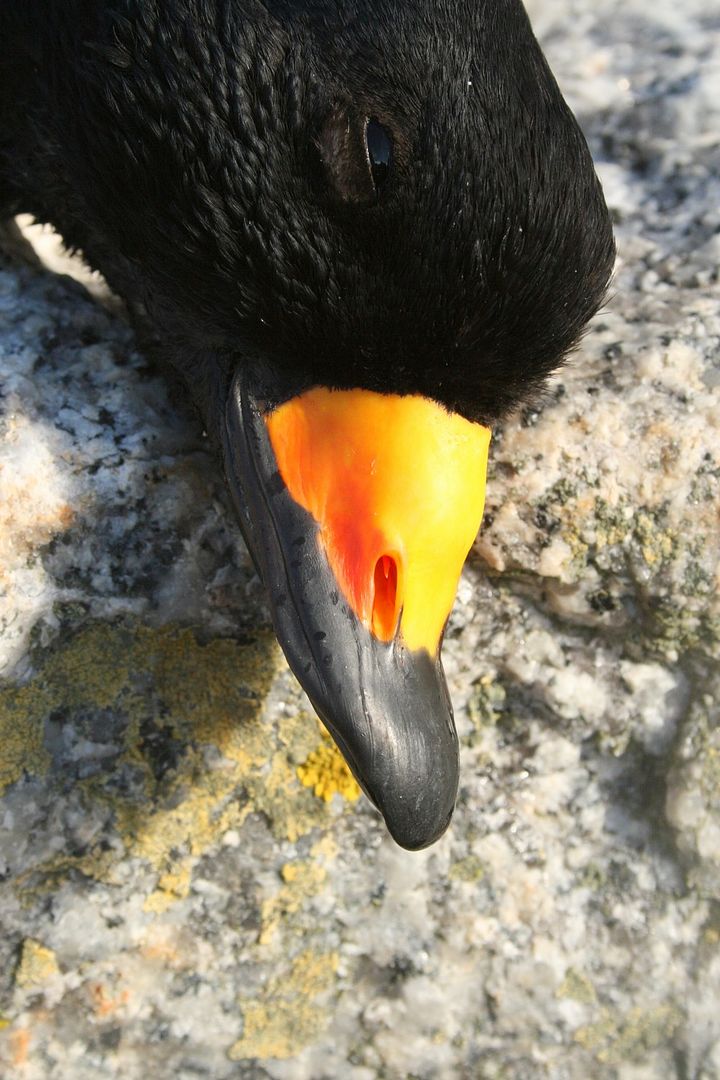
Here is Troy proudly brandishing his "shepherd's crook". We can all look forward to a step-by-step tutorial so we can each make our own.
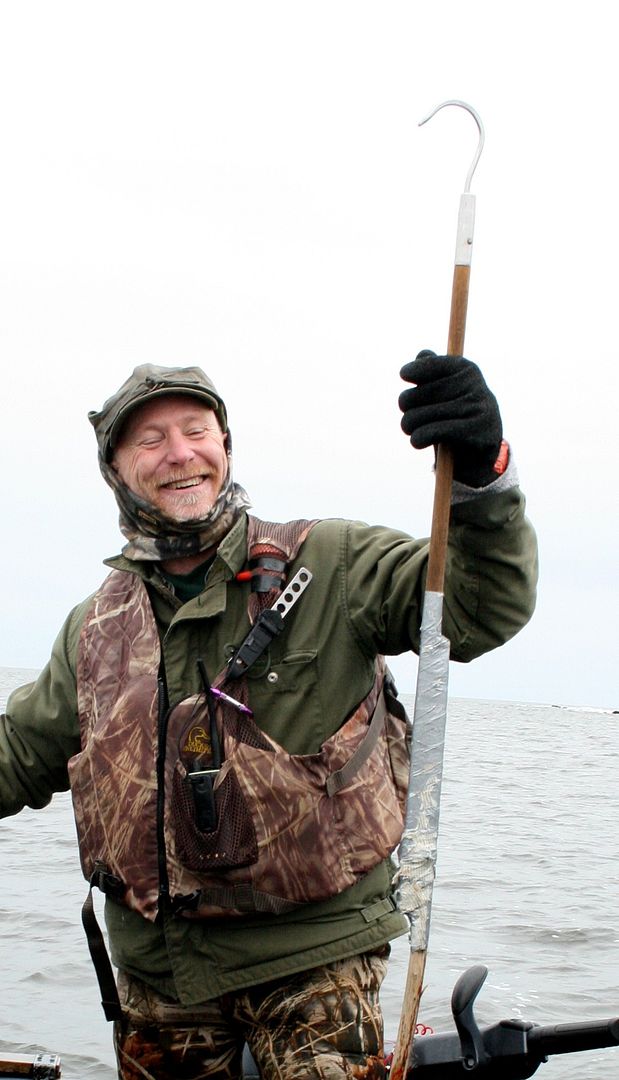
Here is Pearl bringing me my first-ever drake Eider. BTW: Troy frequently helped Pearl out by picking her up with the boat on the longer retrieves. I had never seen such current outside of an inlet or river.
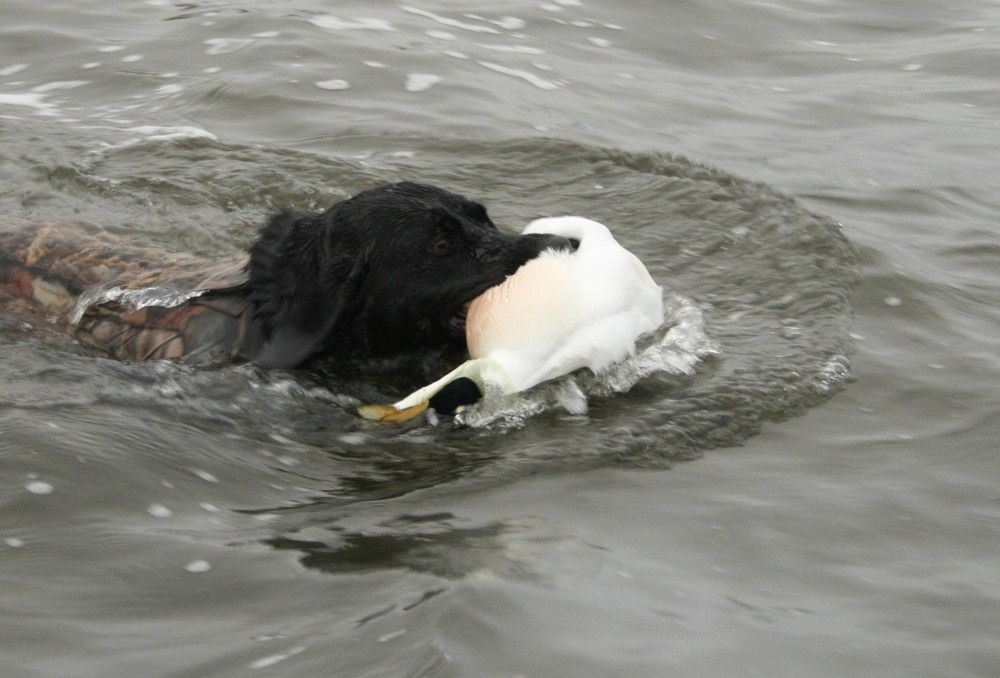
The blushes on the breast and scapulars are wonderful to behold. (Seinfeld devotees will know that George Costanza would say the breast has a "pinkish hue".....)
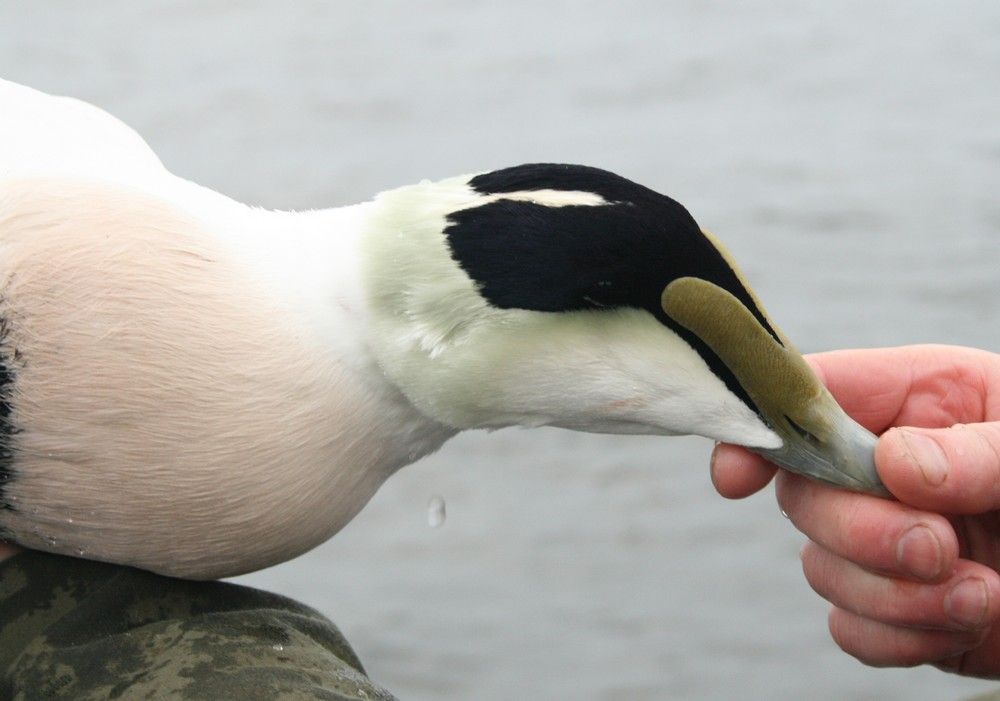
The "black" on the crown is a deep, inky blue on close inspection.
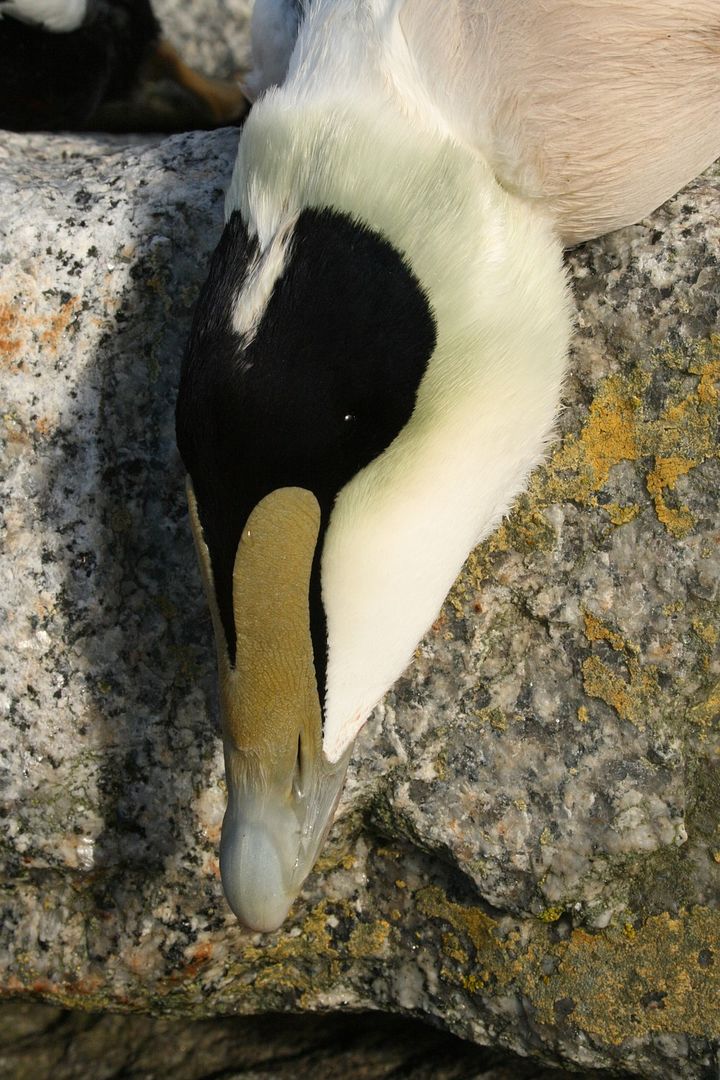
The adult hens are no less spectacular in hand.
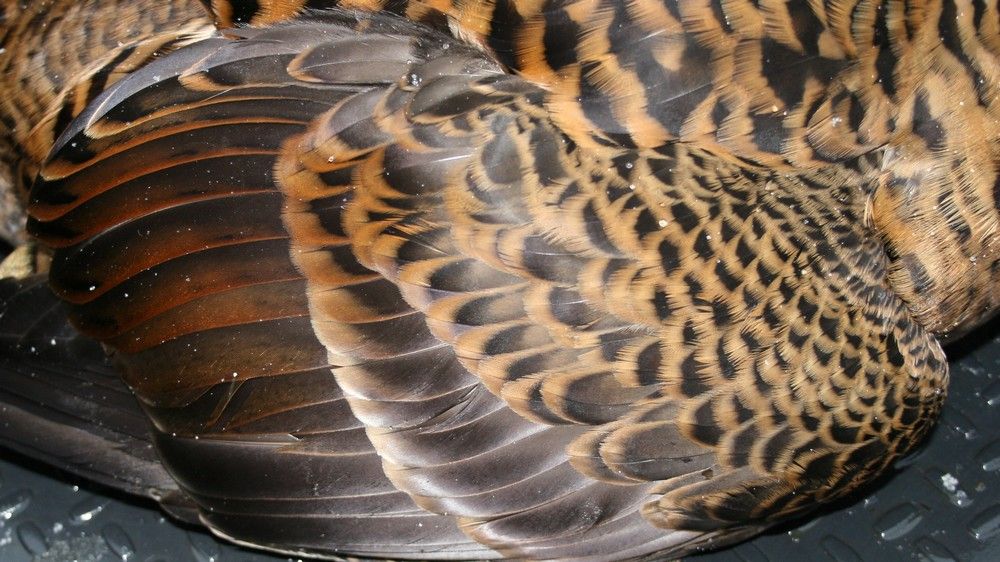
Here is Mark with 3 nice drakes. We both shot reasonably well. I did better when I followed Troy's advice to stand when shooting – to let my knees accommodate the roll of the swells. We had our share of blunders but also made a few doubles. Best of all, we only lost two birds. My first Eider dove and was never seen again. We chased one of Mark's hen Eiders halfway to Portugal – but she judiciously stayed at least a long gunshot away – and always dove in the blink of an eye. We were both relieved that 2 3/4" #3s were sufficient – with the vast majority of our birds "dead in the air". I shot my Dad's Winchester Model 50 (circa 1954) and Mark shot his Browning "humpback" A-5 (circa 1970).
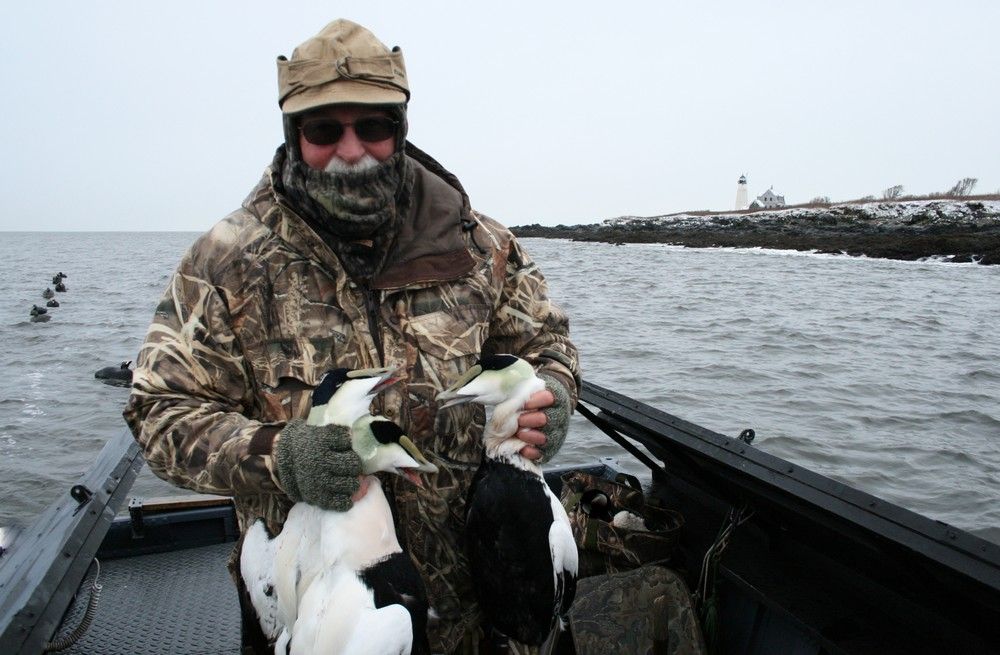
One of my blunders required 3 "sucker shots" to down this drake (the bad kind of "triple"....). He snaked off into the rocks and required the services of Black Pearl. That big splash to the left of the bird is Pearl to the rescue.
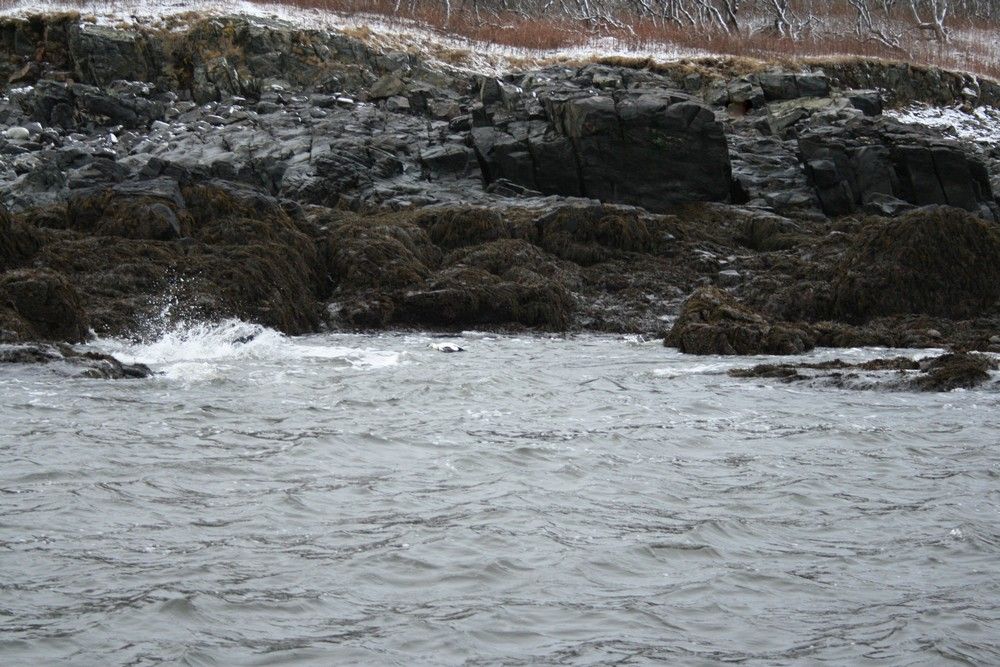
Right back to the boat....
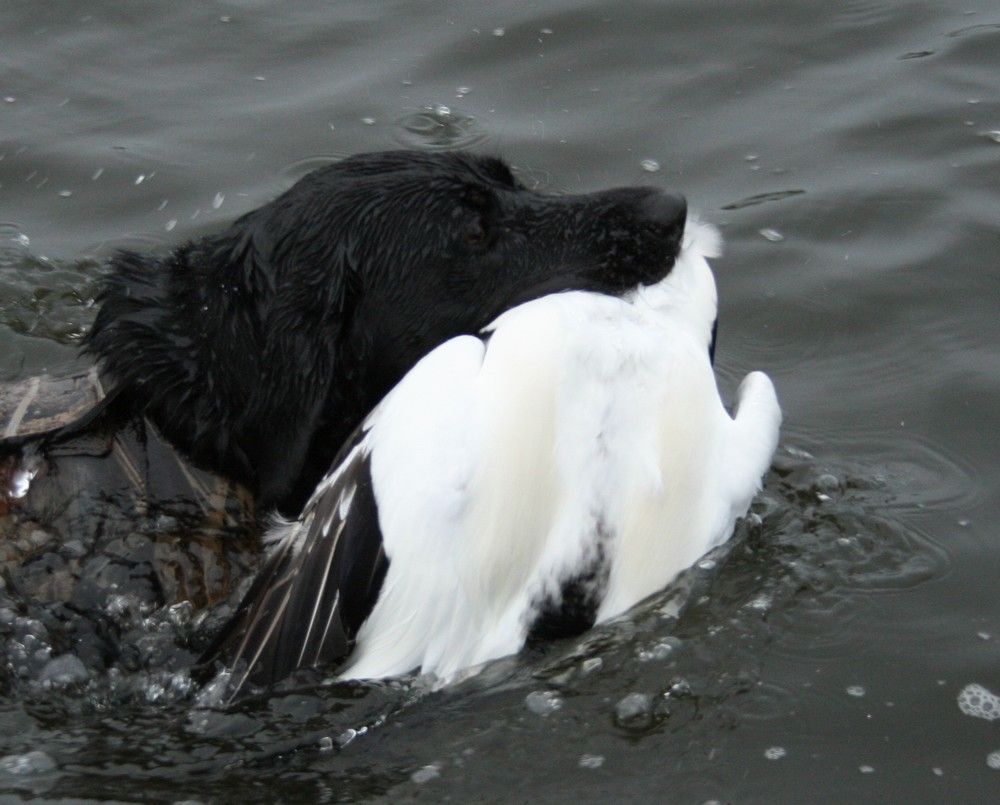
Pot buoys were everywhere but we only saw a couple of lobster boats over our two mornings.
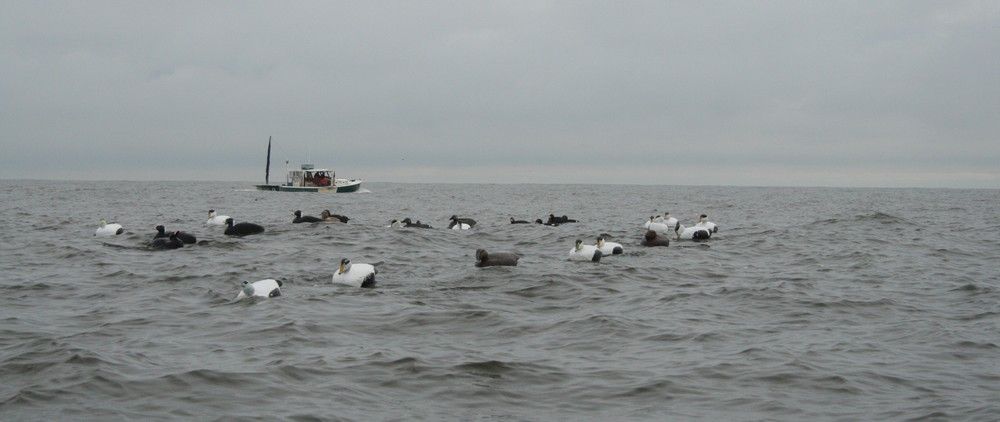
One last look - the end of a perfect experience.
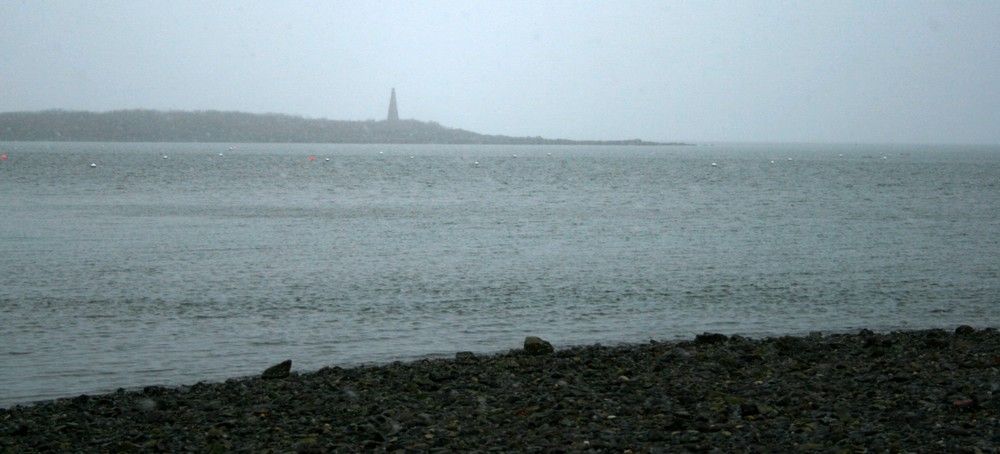
All the best,
SJS
We drove across Vermont and New Hampshire in light snow on Thursday afternoon. After stopping to visit an old friend on the way, we got to our motel after dark. It was still dark when we launched the next morning.
The first sign of good things was – literally – a sign. Unlike the restrictions and prohibitions and exclusion I find increasingly at Long Island launch sites, this one was truly welcoming. I especially liked the hours that accommodate those who use the water other than from "sunrise to sunset" – the hours I typically see on LI.

Troy launches over the beach – hard-packed but still 4WD habitat. We enjoyed the next two mornings in the comfortable and seaworthy Bailey Bridge Boat that Troy has modified for hunting sea ducks. BBBs are military craft designed to be locked transom-to-transom with another and then – along with dozens of other pairs – support a plank "road" to allow vehicles to cross rivers and such on a floating bridge. He has posted his build previously here at duckboats.


A licensed Captain and a Master Guide, Troy was competent, organized, hard-working - and wonderful company.

The swells from a 5-day nor'easter put us in the lee of a wild, rocky island. An old lighthouse and keepers cottage – straight out of an Edward Hopper painting – kept us company.

It was also easy to understand why Winslow Homer - we were just miles from his Prout's Neck studio - could not help but paint this dramatic coastline.

We hunted over a rig of burlapped Eider and Scoter stool – all on long-lines. We were in 6 or 7 fathoms of water on Day 1 and 4 or 5 fathoms on Day 2. The rig worked well and we enjoyed plenty of opportunity. The flight and especially the flock movements of divers are just mesmerizing and we took plenty of moments just to watch them fly the rig. We took our time and picked our shots. On my first "attempt" – as about 15 or 20 Black Scoters peeled over the rig – I was distracted by two Purple Sandpipers right in the middle of the flock and never pulled the trigger. We see very few Purples on Long Island – because they like rocks, which are a rarity on Great South Bay. Maine has plenty of rocks – and many more Purple Sandpipers than I have seen before.


A new "life bird" for me was a Black Guillemot. We had 3 different ones fly by and I got a good look at the second one. They are the size of and fly like a Butterball but show even more white in the wings. Here is how Audubon painted them (we , of course, saw only the winter plumage):

Other "big water" birds we saw were Horned and Red-necked Grebes, Common and Red-throated Loons and Great Cormorants. We saw dozens of Oldsquaw but they typically stayed wide. We had a few hens buzz the rig but we did not salute any of them. We also saw a Rough-legged Hawk – down from the tundra for the winter – hovering over the island. And, we had a Harbor Seal swim up within about 30 yards of our stern – but it "sank" before I could snap the shutter. Later, we saw dozens hauled out on some rocks further in.
Troy worked very hard throughout the whole hunt –

but maybe Black Pearl worked even harder. Here she retrieves the first Black Scoter I have shot in about 30 years.

I remember seeing my first one when I was about 4. My Dad would always bring his birds to the entryway right off our kitchen and I would inspect them. I had forgotten how luminous was the knob on a Pumpkinbill Coot....

Inspecting the birds in the hand in another one of those lifelong "behaviors" which have never failed me.

Here is Troy proudly brandishing his "shepherd's crook". We can all look forward to a step-by-step tutorial so we can each make our own.

Here is Pearl bringing me my first-ever drake Eider. BTW: Troy frequently helped Pearl out by picking her up with the boat on the longer retrieves. I had never seen such current outside of an inlet or river.

The blushes on the breast and scapulars are wonderful to behold. (Seinfeld devotees will know that George Costanza would say the breast has a "pinkish hue".....)

The "black" on the crown is a deep, inky blue on close inspection.

The adult hens are no less spectacular in hand.

Here is Mark with 3 nice drakes. We both shot reasonably well. I did better when I followed Troy's advice to stand when shooting – to let my knees accommodate the roll of the swells. We had our share of blunders but also made a few doubles. Best of all, we only lost two birds. My first Eider dove and was never seen again. We chased one of Mark's hen Eiders halfway to Portugal – but she judiciously stayed at least a long gunshot away – and always dove in the blink of an eye. We were both relieved that 2 3/4" #3s were sufficient – with the vast majority of our birds "dead in the air". I shot my Dad's Winchester Model 50 (circa 1954) and Mark shot his Browning "humpback" A-5 (circa 1970).

One of my blunders required 3 "sucker shots" to down this drake (the bad kind of "triple"....). He snaked off into the rocks and required the services of Black Pearl. That big splash to the left of the bird is Pearl to the rescue.

Right back to the boat....

Pot buoys were everywhere but we only saw a couple of lobster boats over our two mornings.

One last look - the end of a perfect experience.

All the best,
SJS
Last edited:






